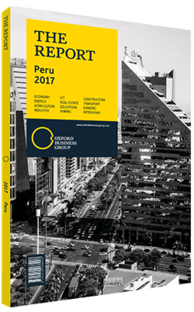Paulo Pantigoso, Country Managing Partner, EY Peru: Interview

Interview: Paulo Pantigoso
What kind of reforms to the Works for Taxes scheme would help optimise the programme?
PAULO PANTIGOSO: First, as a recommendation to be considered, implementing a similar scheme called Services for Taxes would enable public companies at all levels of government to rely on the expertise and knowledge of service companies. This would improve the quality and efficiency of public services. Second, regional and local Public Investment Certificates (Certificados de Inversión Pública Regional y Local, CIPRL) could be deducted from the financing company’s value-added tax debts in addition to being deducted from the income tax. This would be especially valuable for companies at a year-end fiscal loss that are therefore incapable of filing income tax. Furthermore, costs incurred by the financing company when hiring consultants and project managers should also be deducted as part of the CIPRL. Agreements should also include a percentage of the total budget established by the public entity in order to cover additional miscellaneous costs associated with completing any project. Moreover, it is important to enhance the efficiency of the National System for Private Investments. The excess of requisites demanded by this institution has resulted in more than 4000 Works for Taxes projects being halted. Finally, for more informed decision-making, ProInversión could publish a ranking of public entities that use the Works for Taxes scheme.
Which measures would help increase tax collection rates from companies in Peru?
PANTIGOSO: A large percentage of the economy continues to be run informally, which has a direct impact on the state’s ability to collect taxes. Key to tackling informality is simplifying the process of filing taxes and reducing labour overruns. Informal companies will not take any steps towards formalisation if doing so means incurring the excessive overrun costs. Any measure to tackle tax evasion and contraband must be followed by some relief in the process of declaring taxes, which we hope will finally facilitate compliance.
How can Peru’s tax framework be simplified to increase the country’s competitiveness?
PANTIGOSO: In Peru the tax year and commercial year run concurrent to the calendar year. As a result, 7.2m natural persons and 500,000 legal persons close their financial and tax year on December 31 at midnight. This creates bottlenecks at the Superintendency of Tax Administration. Thus, the first measure to simplify the tax framework would be to have multiple closing dates throughout the year, as is done in other countries such as the US, Germany, Switzerland and the UK. Furthermore, Peru’s competitiveness largely depends on its ability to simplify the process and decrease the cost of filing taxes, especially for natural persons and small and medium-sized enterprises. Less information should be required, together with fewer compliance rules. Large companies should not be subject to the administrative burdens they are currently exposed to when filing taxes. Streamlining systems such as the Obligatory Tax Payment System, as well as the withholding and income tax systems, is also a necessary measure. The tax framework can also be simplified by reducing the timescale of tax litigations, as its current length decreases the country’s competitiveness and increases uncertainty among investors.
What type of fiscal measures could help increase foreign direct investment (FDI) levels?
PANTIGOSO: Foreign companies in Peru are subject to the severity of authorities regarding information on commercial transactions when interpreting tax laws. In order to increase FDI volumes, Peru must sign more double-taxation treaties. Specifically, in addition to our existing agreements, we should sign treaties with all those countries’ main commercial partners. This should be a top priority for the new tax administration.
You have reached the limit of premium articles you can view for free.
Choose from the options below to purchase print or digital editions of our Reports. You can also purchase a website subscription giving you unlimited access to all of our Reports online for 12 months.
If you have already purchased this Report or have a website subscription, please login to continue.

